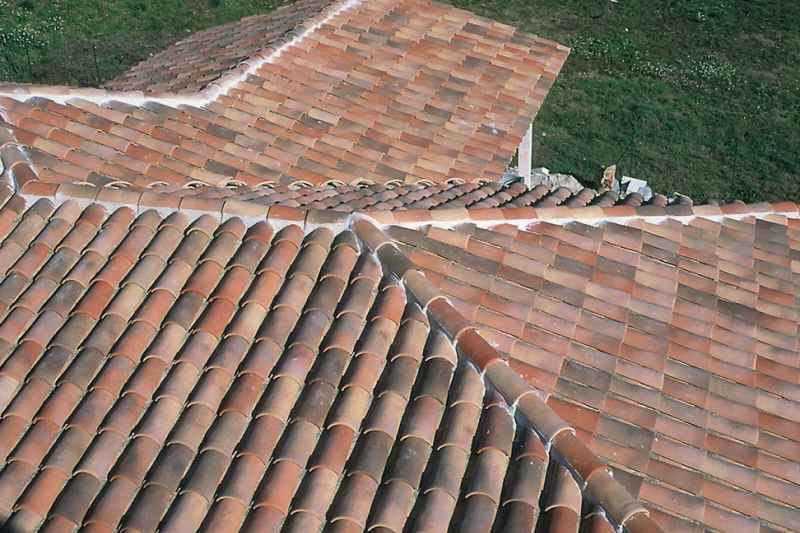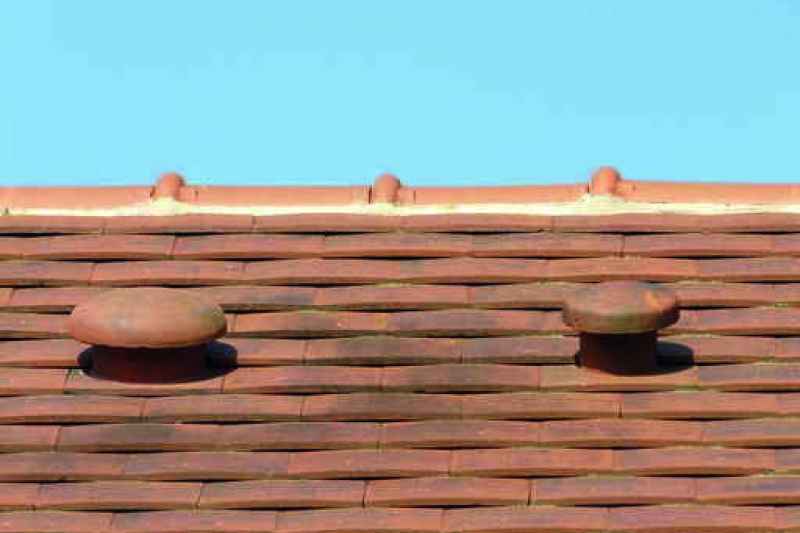Restoration & decoration
Tile sealing, ridge sealing, edge sealing, and flashing installation
Works
Sealing tiles, ridges, edges, and creating flashings and natural cement

Both technical and aesthetic, the installation of tiles, ridges, or edges is not a step to be taken lightly. Indeed, if they are poorly sealed or improperly installed, water infiltration through the roof can occur. Optimal tile sealing thus prevents any water infiltration, ensuring roof waterproofing, preventing streaks and stains by allowing the runoff of edge waters, and ultimately enhancing the roofs and the building itself.
Solution
PROMPT natural cement, used in combination with lime, is employed for sealing tile ridges, edges, and creating flashings. The mortar of lime and PROMPT natural cement brings aesthetics (the mortar can be colored), quick execution, and preservation of old or natural substrates. PROMPT natural cement also allows for application in cold weather, significant thicknesses, and securing of mortars in case of rain (no streaks).
Technique
First and foremost, prepare the support. Moisturize both the substrate and the elements to be placed with clean water to enhance adhesion. Then, prepare the mortar of lime and PROMPT natural cement. Dry mix the PROMPT natural cement, lime, dry sand, and TEMPO retarder to homogenize the mixture, add water, and knead until obtaining a consistent paste. Proceed to implementation. Lay the mortar by pre-shaping the tile's form, then place the tile, stabilize and compact it. Tighten the mortar well to ensure aesthetics and water tightness. Remove excess mortar to achieve a smooth appearance. Clean the tiles to remove all traces of mortar.
Astuce
Pour éviter que les surfaces poreuses n'absorbent trop rapidement l'eau du mortier, veillez à humidifier le support ainsi que les éléments à poser avec de l'eau propre. Cette précaution permet d'assurer une meilleure adhérence du mortier et d'éviter la formation de fissures ou de décollements prématurés.
Comment appliquer le mortier pour sceller les tuiles ?
Pour une application optimale du mortier, déposez-le à l'endroit souhaité en lui donnant une forme arrondie. Ensuite, placez la tuile dessus, stabilisez-la et tassez fermement pour assurer une bonne adhérence.
Serrez bien le mortier afin de garantir l'esthétique et l'étanchéité, puis retirez l'excédent pour obtenir une surface lisse et uniforme. Nettoyez ensuite les tuiles à l'aide d'une éponge humide pour enlever toutes traces de mortier et obtenir un résultat impeccable.
Combien de temps faut-il pour que le mortier sèche ?
Dans le cas d'un mortier de Ciment Naturel Prompt employé seul, le temps de séchage est allongé par l'utilisation du TEMPO afin de permettre un temps de mise en œuvre adapté à la durée du chantier.
Ainsi, les temps de prise avec TEMPO sont de 20 minutes à une température de 30°C, 40 minutes à une température de 20°C et 80 minutes à 10°C.
Advantages of its application

Using a Vicat PROMPT natural cement mortar for tile sealing provides :
- Aesthetic appeal
- Mortar security in case of rain
- Preservation of old and natural substrates
- Quick execution
Fields of application

PROMPT natural cement is used for sealing tiles, but also for all kinds of sealings such as sealing joineries, hinges, and shutter stops, as well as outdoor furniture sealings.
Achievements
Discover our realized projects
Product
Discover everything about PROMPT natural cement
The only cement with strengths at the end of setting, it allows for the quickest return to service. In formulations, it also acts as a powerful accelerator for all hydraulic binders (lime, Portland cement, calcium sulfoaluminate cement, calcium aluminate cement).
